Interview with Dr. Gladys Kalema-Zikusoka
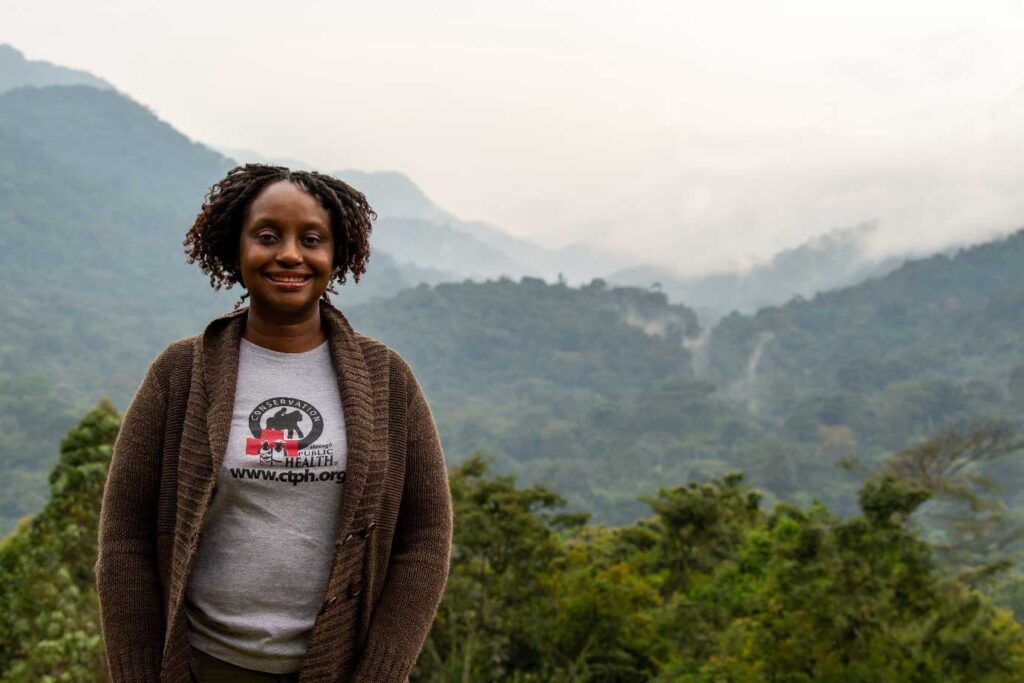
Dr Gladys Kalema-Zikusoka was Uganda’s first wildlife vet and founder of Conservation through Public Health and NGO that improves the health and well-being of rural communities to contribute to greater biodiversity conservation and sustainable development in and around Africa’s protected areas. This year she published her new book ‘Walking with Gorillas’ that follows her life commitment to protecting and conserving gorillas across Africa.
Gorillas are the largest species of primates in the world. Males grow to around 5 ½ feet tall and weigh around 400 pounds and the females grow to 4 ½ feet tall and weigh around 200 pounds. They share 98% of their DNA with humans so it’s no wonder that like us they need their very own Doctor!
Uganda Wildlife Authority works with several other organizations and charities to maintain the forest in which they live. With no mountain gorilla ever surviving in captivity, it highlights just how vital protecting their natural habitat is to their survival.
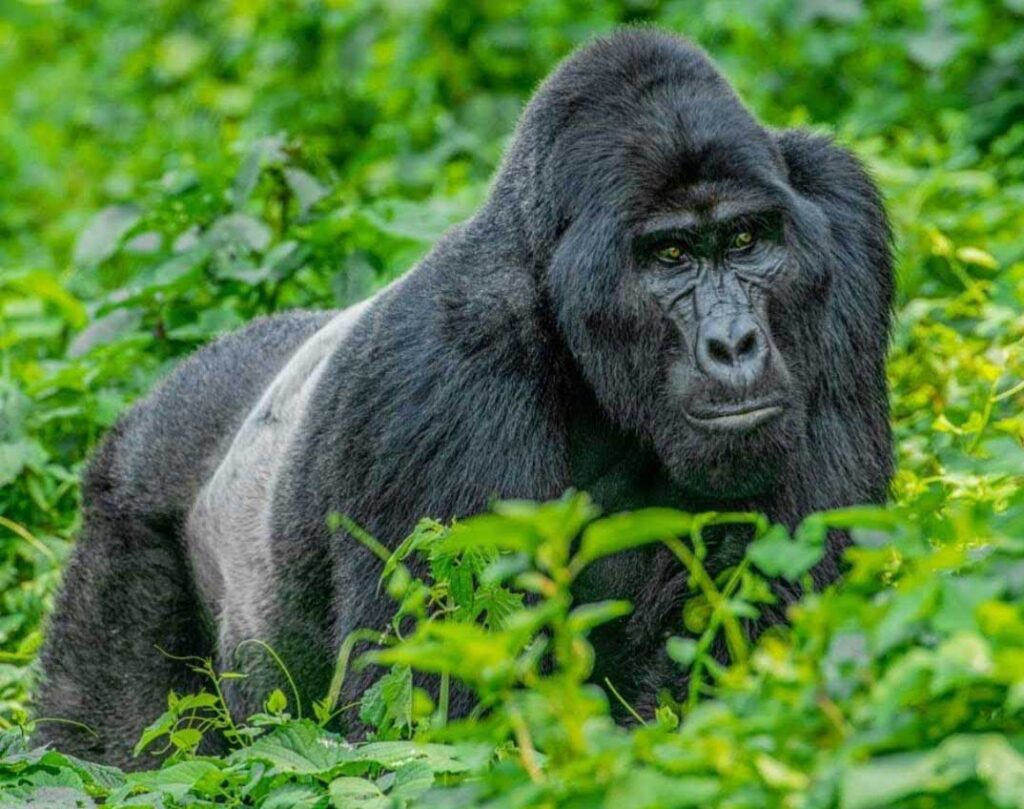
Great Lakes safaris spoke to Uganda’s Gorilla Doctor Gladys Kalema-Zikusoka to find out more about these endangered species and how we can help protect them.
Can you tell us how tourism is directly helping the survival of mountain gorillas?
Tourism is directly helping the mountain gorillas by providing a sustainable source of income for gorilla conservation. Ecotourism with such an endangered species not only encourages the need to tread lightly by limiting the number of tourists to each gorilla group but also provides benefits to local communities who are engaged in the tourism industry through employment, local businesses selling crafts, accommodation, and food among others.
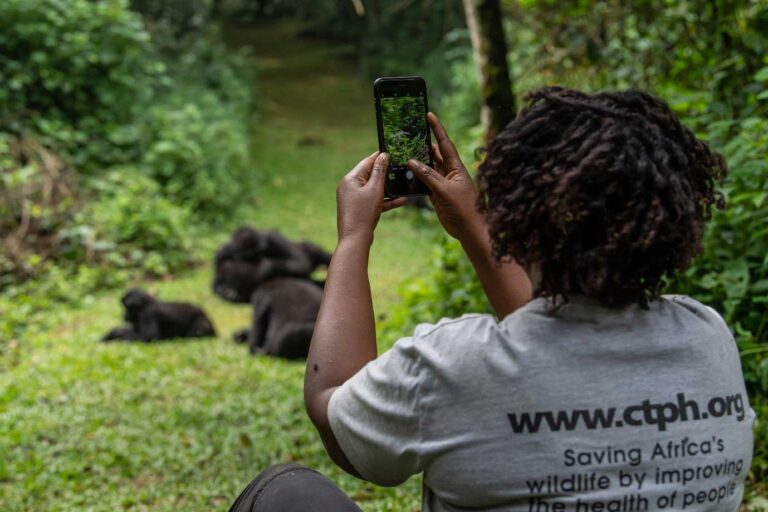
We heard that mountain gorilla numbers are now above 1000 for the first time. What has contributed to this growth in numbers?
A number of factors have contributed to the increase in mountain gorilla numbers from 650 when I first started working with gorillas in the 1990s to over 1,000 at the last census. This includes veterinary care for individual gorillas, improving community health to reduce disease transmission between people and gorillas, and other community conservation efforts such as ecotourism and support to local coffee farmers, which improves community livelihoods and reduces their dependence on the gorilla habitat to meet basic needs for food and fuel wood; as well as law enforcement and research and monitoring to guide better management of the critically endangered gorillas and their fragile habitats.
How did you become a Gorilla Doctor?
I became a gorilla doctor after I conducted research on parasites and bacteria in the mountain gorillas at Bwindi Impenetrable National Park as part of my studies as a veterinary student at the Royal Veterinary College, University of London. I had always wanted to be a vet and when I started a wildlife club in my high school, Kibuli Secondary School in Uganda, I decided that I wanted to become a vet who also works with wildlife. In the fourth year of vet school, I got the opportunity to study mountain gorillas and was hosted by Dr. Liz Macfie, heading the International Gorilla Conservation Program (IGCP) in Uganda that was working with Uganda National Parks, which later became Uganda Wildlife Authority (UWA) to develop mountain gorilla ecotourism. The four weeks I spent at Bwindi in 1994, when tourism had just begun was a life-changing experience that made me want to become a full-time wildlife veterinarian. One year later I got my dream job as the first veterinarian for the Uganda Wildlife Authority because they needed a vet to look after the gorillas to minimize the risk of cross-species disease transmission from closely related humans including tourists.
Gorilla tourism has been operating in Uganda for 30 years in 2023, what has been the biggest change over these years?
I have seen a lot of changes since I first started working with gorillas in 1994. At that time there were only two gorilla groups, Mubare and Katendegyere. Unfortunately, the Katendegyere gorilla group eventually disintegrated because of too many males and also suffered from the first recorded scabies disease outbreak in the mountain gorillas traced to people living around the park who have limited access to health services. This eventually led to more gorilla groups being habituated and causing the biggest change in 25 years, economic benefits from gorilla tourism that has transformed the local economy of Bwindi. Since the number of habituated gorilla groups has increased to 16, the number of lodges and tourists to Bwindi has increased and so have the benefits to the local community and sustainable income for UWA and Uganda as a whole. This has in turn resulted in greater support for gorillas, the park, and wildlife conservation in general.
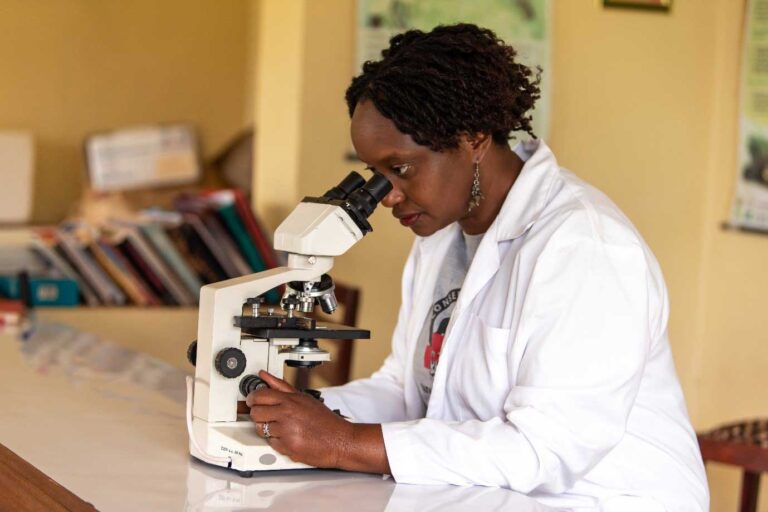
We know that every time we trek for gorillas we are helping through awareness and our permit price but how else can our readers support gorilla’s survival both now and in the future?
People can support gorilla tourism by adding a day or two after the gorilla trekking to learn about the local conservation efforts on the ground, how gorillas are looked after through health services, and how the local communities’ quality of life is being improved through engagement in conservation and livelihood activities that enable them to coexist with the gorillas and other wildlife at Bwindi.
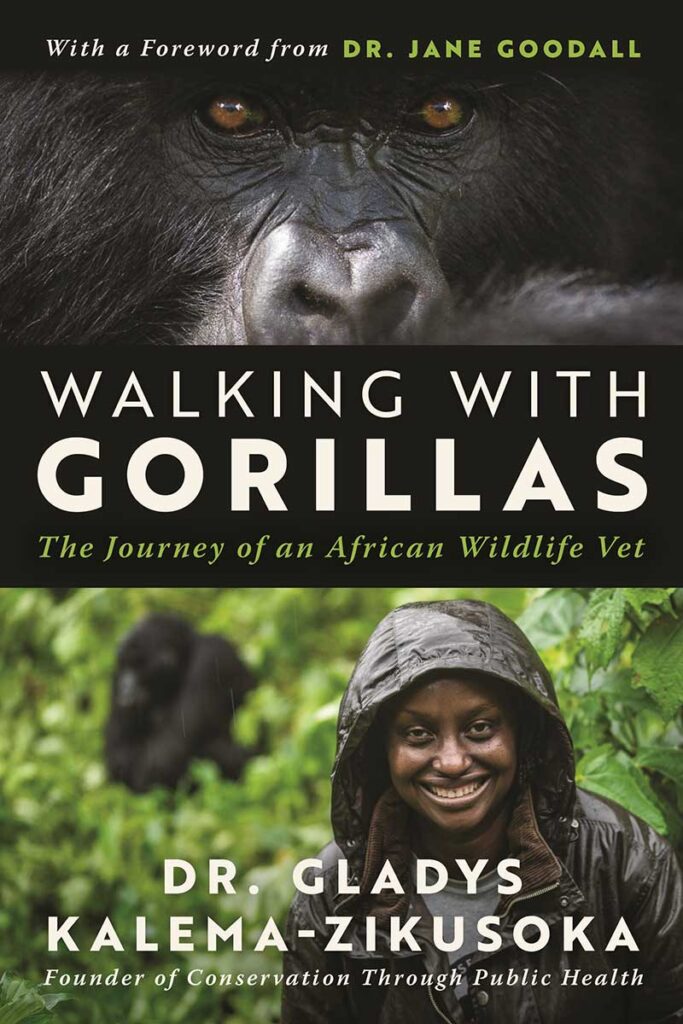
Walking with Gorillas takes the reader on an incredible personal journey with Dr. Gladys, from her early days as a student in Uganda, enduring the assassination of her father during the civil war, to her veterinarian education in England to establishing the first veterinary department for the Ugandan government to founding one of the first organizations in the world that enables people to coexist with wildlife through improving the health and wellbeing of both. Her award-winning approach reduced the impact of the COVID-19 pandemic on critically endangered mountain gorillas.
In the face of discrimination and a male-dominated world, one woman’s passion and determination to build a brighter future for the local wildlife and human community offers inspiration and insights into what is truly possible for our planet when we come together.
For more information on the work being done by Dr Gladys please visit www.ctph.org
Click on the links below to read other articles about Gorilla trekking in Uganda’s Bwindi Impenetrable National Park
Gorilla Tourism and Conservation Success Story by Catherine Marshall in the Sydney Morning Herald
Affordable Gorilla Encounters in Uganda by Sarah Marshall in the National Geographic
